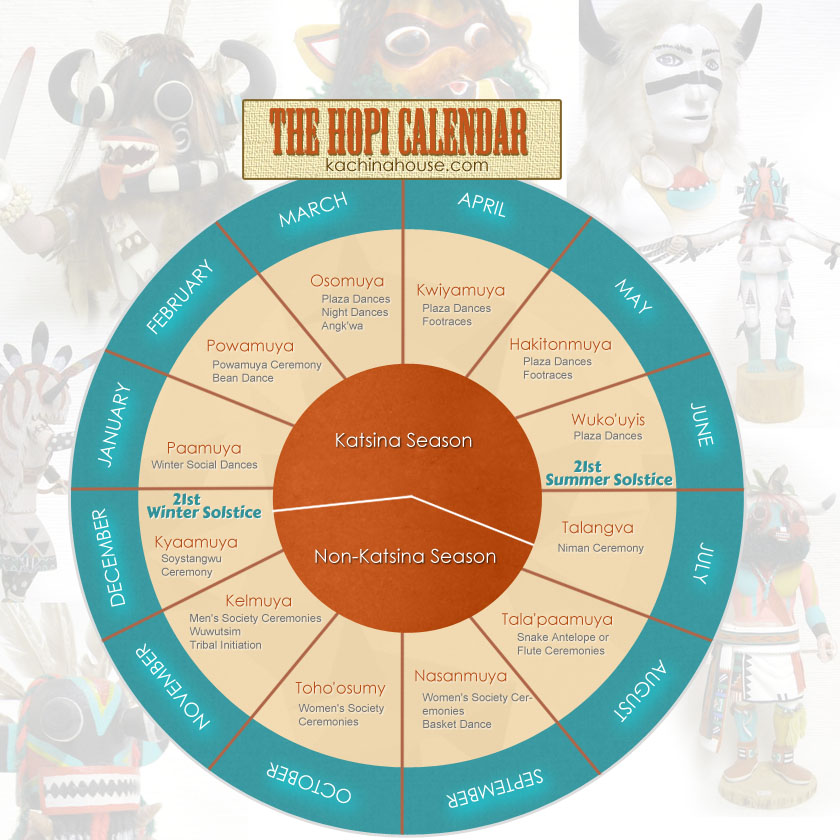Hopi Ceremonial Calendar
The Hopi people have their own unique calendar which coincides with their extensive ceremonial schedule. The ceremonial calendar is divided into two sections—Katsina Season and non-Katsina Season. The seasons are planned according to the position of the Sun and the Moon, and ceremonies line up fairly close to the months of the year.

During the summer months of the non-Katsina Season, Hopi villagers operate on a regular harvesting schedule. This time includes the Tala’paamuya (August), Nasanmuya (September), Toho’osmuy (October), and Kelmuya (November), during which a variety of dances and celebrations occur.
As the colder months arrive, Hopi villagers seek guidance and assistance from the Katsina spirits. The Katsina Season begins at winter solstice, when figures representing the Katsina spirits emerge around Hopi villages. This occurs during the Kyaamuya (December) ceremony, a time of planning and preparation culminating in the arrival of one of the Chief Katsinam who on the last day of the ceremony ceremonially opens the kivas for the season.
The Katsina Season continues with the following ceremonies:
Paamuya
(January)
– A time both celebratory and reflective, to help the Hopi prepare for and withstand the long winter.
Powamuya
(February)
– The bean dance, in which bean sprouts are distributed to the villagers by Katsinam. Also a rite of passage for Hopi children.
Osomuya
(March)
– Night dances foreshadow the coming harvest, inviting the rain and encouraging growth.
Kwiyamuya
(April)
– As villagers prepare fields for planting, “Racer” Katsinam arrive to engage in footraces with villagers, leaving any challenger with gifts of food.
Hakitonmuya
(May)
– Responsibilities are delegated to every villager as the planting season begins with encouraging dances.
Wuko’uyis
(June)
– The planting season is fully underway, including the revered corn crop. Katsinam appear in villages at sunrise for a dance.
Finally, the Talangva (July) recaps the entire Katsina season, climaxing with the Niman ceremony shortly after the summer solstice. Crops and plant life are flourishing as Katsinam arrive at dawn with more gifts. After much merriment, all the brides of that year are given a special blessing, and the Katsinam depart for their spiritual home in the San Francisco peaks with the prayers and blessings of the Hopi people.